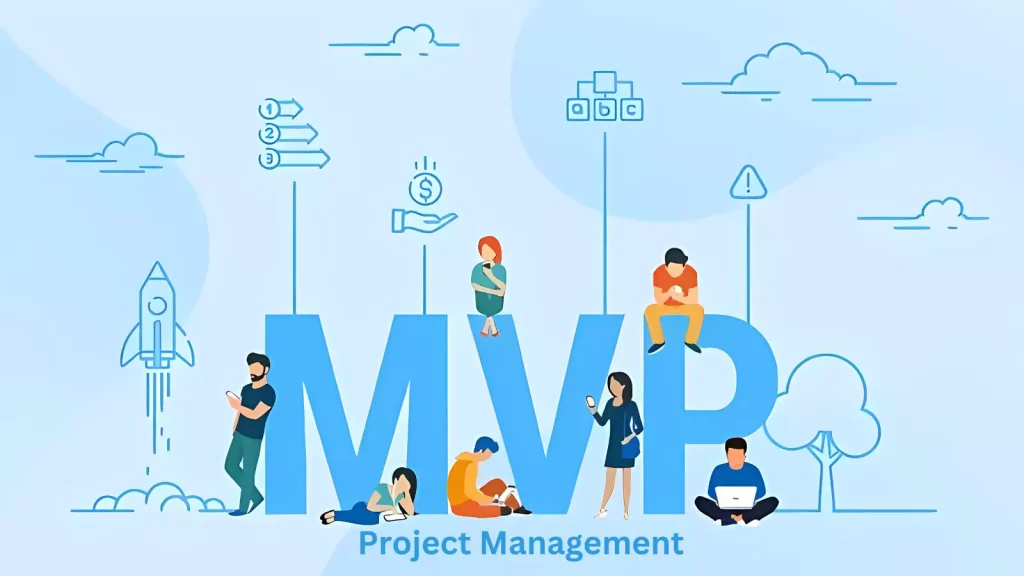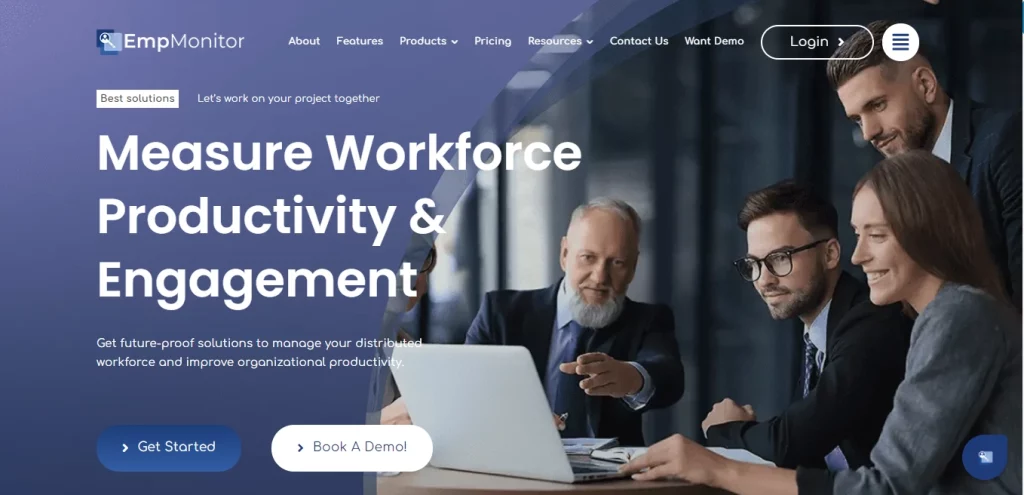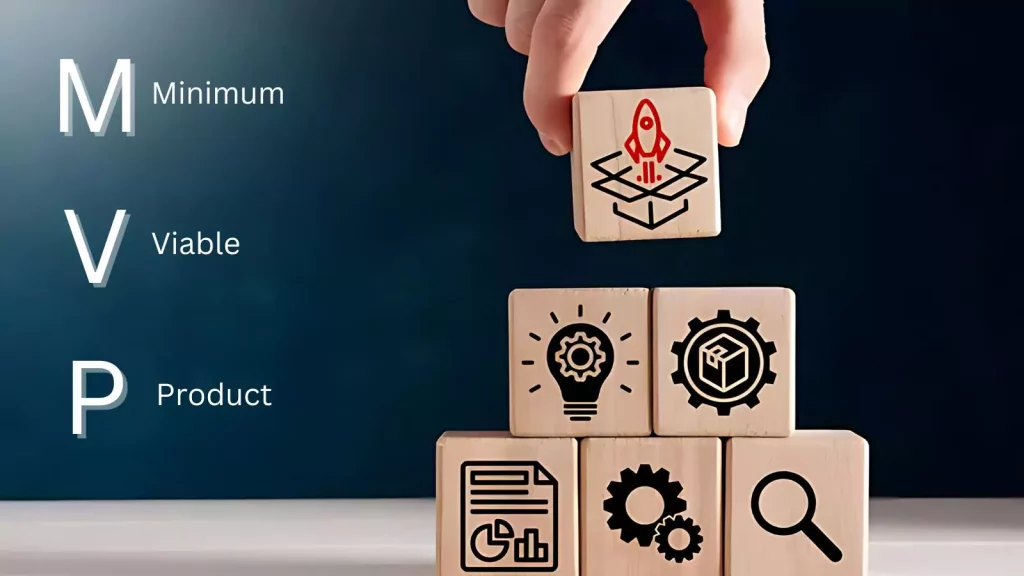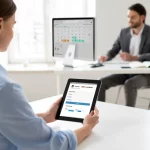In the domain of project management, innovation, and efficiency play pivotal roles. An approach that has increasingly gathered attention in recent years is the Minimum Viable Product (MVP) concept. MVP project management focuses on developing a product with the most essential features needed to meet early customer demands and gather critical feedback. This methodology allows businesses to swiftly bring a product to market, test its viability, and make informed decisions for future iterations.
In this blog, we’ll explore the essentials of MVP project management, the benefits it offers, and strategies for effectively implementing it to ensure your project’s success.
LISTEN TO THE PODCAST NOW!
What Is MVP In Project Management?
In project management, a Minimum Viable Product (MVP) is a streamlined version of a product- featuring only its most essential components. It acts as a working prototype, enabling businesses to test their hypotheses and gather input from initial users.
Developing an MVP project management is a strategic method that lets companies validate their ideas with minimal resources and investment. By concentrating on the essential functionalities, businesses can swiftly launch a product and iterate based on real-world feedback, minimizing the risk of creating a fully developed product that might not align with market needs.
The Role Of MVP In Project Management
MVP project management is essential for ensuring the successful execution of projects. It can help you in:-
Streamlining The Development Process
Implementing MVP project management streamlines the development process by breaking it into smaller, manageable parts. This approach allows for rapid iterations and continuous improvement based on user feedback. By concentrating only on the essential features, development teams can avoid unnecessary complexities and deliver value swiftly.
Additionally, the MVP project management approach promotes a more agile and adaptive development process. By releasing a minimum viable product quickly, project teams can gather real-world data and insights to inform subsequent iterations. This iterative method fosters a culture of learning and innovation, enabling teams to respond promptly to changing market demands and user needs.
Reducing Project Risks
A key benefit of using MVP project management is the reduction of project risks. Developing a full-fledged product without first validating its market fit can result in wasted time, resources, and effort if it doesn’t resonate with customers.
By creating an MVP, project teams can test their assumptions, validate concepts, and identify potential pitfalls early on, thus minimizing the risk of failure. Additionally, using project management tools like EmpMonitor can help you get detailed insights into team productivity, ensuring that the project remains on track and potential issues are addressed promptly.
Furthermore, the MVP project management strategy promotes a lean and cost-effective approach to product development. By concentrating on core functionalities and collecting user feedback early in the process, teams can avoid heavily investing in features that may not provide significant value to end users. This lean mindset not only reduces financial risks but also ensures that resources are allocated efficiently toward building a product that truly meets customer needs.
EmpMonitor: Workforce Management Software
EmpMonitor tool is designed to optimize workplace management by providing comprehensive monitoring and analytics capabilities. This tool can help you target primarily to enhance your team productivity and ensure security within your organization. Here’s a closer look at its key features:
- Activity Monitoring: EmpMonitor has this real-time activity monitoring feature that allows you to check employees’ work activities. This includes website monitoring to know which tools and websites they are using and how they use applications throughout the workday. It provides insights into how employees allocate their time and whether they are engaged in productive tasks or activities that may be unrelated to work.
- Screenshot Monitoring: This feature captures screenshots of employee desktops at regular intervals, providing visual evidence of their work progress. It helps supervisors or managers to verify that employees are focused on assigned tasks and meeting deadlines.
- Application Monitoring: EmpMonitor monitors the usage of specific applications by employees. It helps to track which software tools employees are using, how frequently they use them, and whether these applications contribute to productivity or distractions.
- Productivity Analysis: EmpMonitor offers detailed reports and analytics on employee productivity. It analyses data such as time spent on productive tasks versus non-productive activities, helping employers to identify productivity trends and areas for improvement.
- Remote Work Monitoring: As more employees work remotely, EmpMonitor supports monitoring across different locations. It ensures that remote workers maintain productivity levels comparable to in-office employees and adhere to company policies.
EmpMonitor, project management software, offers a suite of highly beneficial features that can be used for managing MVP projects. Its detailed tracking, real-time monitoring, and comprehensive analytics provide the necessary tools for ensuring that the MVP project management development process is efficient, transparent, and well-managed. Leveraging EmpMonitor beneficial features can surely help project managers enhance productivity and accountability in their team and ensure overall project success.
Key Project Management Skills For MVP Success
Project managers involved in MVP projects need to possess several key skills to ensure successful outcomes:
- Effective Communication: Project managers must collaborate with various stakeholders, including developers, designers, and product owners. Clear and concise communication helps keep everyone aligned and working toward the same goals.
- Agile Methodology Expertise (Scrum and Kanban): These methodologies are frequently employed in MVP development because of their iterative and incremental characteristics. Project managers with a deep understanding of agile principles and practices can help the team effectively plan, prioritize, and deliver features promptly.
- Risk Management: MVP project management is developed with limited resources and tight timelines, so project managers need to identify and mitigate potential risks that may impact the project’s success. It involves conducting risk assessments, creating contingency plans, and monitoring risks throughout the project lifecycle.
- Ability To Adapt Quickly To Changing Circumstances: Developing MVP project management often entails dealing with uncertainty and ambiguity, as the project relies on assumptions and hypotheses that require validation. Project managers adept at navigating uncertainty and guiding cross-functional teams tend to achieve greater success in MVP projects.
Steps To Excel In MVP Project Management
Excelling in MVP project management demands strategic planning and execution. From initial ideation to market launch, mastering these steps is essential for success. This guide covers crucial strategies and practical tips to manage projects effectively, helping you navigate the MVP process and turn your vision into a viable, market-ready product.
1. Define the Problem to Solve
The initial step in product development is to clearly outline the problem you aim to address. It might involve identifying significant gaps in the market or shortcomings in existing products. Before proceeding with development, it’s crucial to have a deep understanding of the problem your product will solve.
Ask questions such as:
- Who are the potential customers?
- What is the underlying need driving customer demand for this product?
- Why is the timing critical for launching this solution?
- What new capabilities does this product offer that were previously unavailable?
- What current alternatives are customers using to tackle this problem?
Define the pain points of your target customers through surveys, one-on-one interviews, and focus groups to gain a comprehensive understanding of their challenges. Supplement your findings with existing data.
For instance, Uber’s founders identified the problem of customers struggling to find taxis, especially during nighttime or inclement weather. Consequently, they developed a straightforward MVP to facilitate cab booking through a mobile app.
2. Conduct A Comprehensive Competitive Analysis
Perform a thorough examination of all competitors within your market, evaluating their strengths and weaknesses. This process helps you understand the current solutions customers use and identifies areas where opportunities exist.
During your market research:
- Outline features, target audience, pricing, and unique selling points.
- Review user feedback to discern what aspects of each product resonate and which do not.
- Conduct a SWOT analysis to gain deeper insights.
Remember, competition extends beyond direct product comparisons. For example, Spotify competes not only with other music streaming services like YouTube Music and Apple Music but also with traditional radio stations. Understanding these dynamics allows you to prioritize features that set your MVP project management apart.
For instance, Instagram’s initial MVP, Burbn, focused on location-based check-ins similar to Foursquare. However, user research revealed a stronger interest in photo-sharing capabilities, prompting Instagram to pivot and create a more compelling user experience centered around visual content.
3. Determine Essential MVP Features
Based on your research, pinpoint the crucial features that will deliver significant value to early customers.
- Compile a comprehensive list of potential features to include.
- Distinguish essential features from less critical ones, emphasizing those with the greatest impact.
- Evaluate feature choices based on implementation effort versus expected impact.
For example, Airbnb’s initial MVP focused on a specific use case- apartment sharing for conference attendees. While Airbnb has since expanded globally with diverse offerings, the MVP project management validated the core idea by delivering a targeted solution to a specific market need.
4. Evaluate And Learn
After launching the MVP, the focus shifts to assessing customer feedback and usage data. Identify the essential metrics for evaluating your MVP’s success using the SMART goals framework, ensuring they are specific, measurable, achievable, realistic, and time-bound.
Consider these metrics:
- Acquisition of users across different channels
- Metrics for user engagement, like active users and session duration,
- Most-used features
- Features with the highest drop-off rates
- Retention metrics, including the percentage of returning customers
Remember, evaluating your MVP’s performance isn’t limited to numerical metrics alone. Qualitative insights from user testing, interviews, and observational research can also provide valuable feedback. Use this comprehensive information to understand:
- How various user segments interact with the MVP
- Which features users are drawn to, and whether this aligns with your initial concept
- Conversion rates at each stage of the user journey
- User sentiment towards the MVP through sentiment analysis
5. Iterate And Pivot Or Persist
At this stage, you decide whether to pivot or persist. If a specific feature saves significant usage, delve into why and enhance it further. For features with low engagement, hypothesize and iterate to improve their appeal. If new users are entering through referrals, capitalize on this by implementing referral codes, easy-to-share links, and social share buttons.
Once you establish this process, continue refining and repeating it as needed!
ALSO READ,
How To Pick Monitoring Software With 7 Best Project Management Features?
6 Easiest And Most Effective Ways To Manage Projects
Real-World MVP Examples
Many of today’s successful startups started as MVP project management, demonstrating successes and lessons learned. Here are a few notable examples:
Spotify’s MVP
Spotify embarked on a mission to provide fast and reliable online music streaming that could persuade users to opt for legal access over piracy. Despite existing competitors like iTunes, Rhapsody, Napster, and WinAmp in 2005-2006, Spotify developed a straightforward desktop app as its MVP. Within just four months, this initial version was tested among friends, family, and music bloggers in Sweden.
User feedback from these early adopters prompted Spotify to enhance its offering with features such as mobile compatibility, playlists, and artist profiles. The positive response validated Spotify’s initial hypothesis, leading to its public launch in 2008. Since then, Spotify has expanded its features significantly, including podcasts, offline mode, and personalized recommendations. Today, it boasts a large user base and offers premium subscription options, building on the success of its MVP project management approach.
Facebook sought to solve the problem of connecting college students online amid competition from platforms like MySpace, Friendster, and Orkut, which lacked user-friendly interfaces and opened networks to all internet users.
Facebook’s MVP strategy emphasized a simple interface, initially available only to those with Harvard email IDs, highlighting exclusivity and privacy.
The feedback was overwhelmingly positive, highlighting the demand for a new social network beyond college campuses.
Officially launched in February 2004, Facebook quickly expanded, reaching one million active users by year’s end. Today, with over 2.9 billion monthly active users, Facebook has evolved into a multi-product company encompassing platforms like Facebook Messenger, Instagram, and WhatsApp.
Uber
Uber set out to solve the problem of connecting riders with drivers efficiently- amidst competition from traditional taxi services notorious for peak-hour challenges.
Launching as ‘Ubercab’ in 2010 across mobile and web apps, initially targeting friends and early adopters in New York and San Francisco, the MVP allowed users to:
- Request rides via the app
- Match with nearby drivers
- Track rides in real-time
- Easily pay with cashless methods like PayPal
Early feedback emphasized the importance of supply-side marketing, prompting Uber to focus on driver onboarding. Safety concerns led to the addition of rating systems and emergency notifications.
Today, Uber serves 150 million users monthly across 70 countries, illustrating how MVP testing can launch and scale an idea effectively in new markets, fostering rapid learning and growth without excessive initial investment.
Wrapping Up
Adopting an MVP project management approach offers numerous advantages. It allows teams to validate ideas quickly, minimize risks, and adapt to feedback efficiently. By integrating workforce management tools like EmpMonitor for detailed productivity insights, teams can further optimize workflows and ensure focused development efforts.
Embracing MVP project management principles not only enhances project success rates but also fosters a culture of innovation and continuous improvement within organizations.
FAQs
Q. What does MVP mean in agile?
MVP stands for Minimum Viable Product. It refers to the simplest version of a product that can be released to validate assumptions and test the core functionality with early adopters. The goal of an MVP in Agile is to quickly develop and deliver a product with just enough features to gather feedback, learn about user needs, and make informed decisions for future development. This approach supports iterative development and continuous improvement, aligning with Agile principles of flexibility and responsiveness to change.
Q. Is an MVP a product or a prototype?
An MVP (Minimum Viable Product) is a finished product with essential features, allowing you to gather user feedback and iterate on future releases. In contrast, a prototype focuses on design and UX, lacking the business logic of the final product.
Q. How to write an MVP document?
To write an MVP (Minimum Viable Product) document, follow these steps:
- Frame the problem
- Identify the users
- Understand the users
- Validate the problem
- Ideate and explore solutions
- Define the ‘Complete’ Product
- Define the Minimum Viable Product
- Define a Measurement Framework















